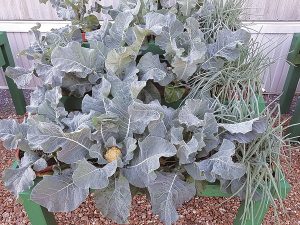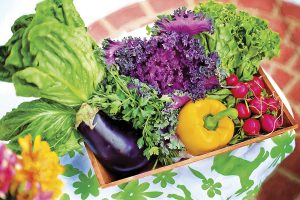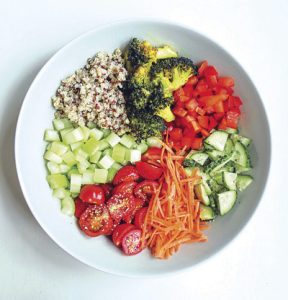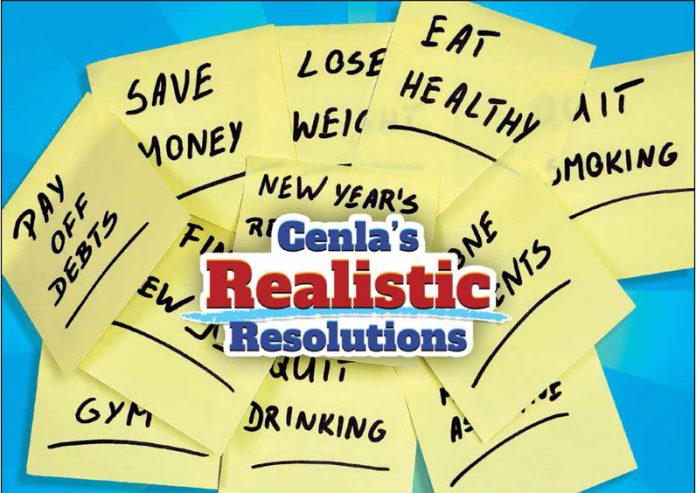With every New Year comes the hope for new beginnings and an opportunity for a fresh start in areas of our lives in which we hope for improvement. Unfortunately, many of these fall by the wayside before February even arrives. This year, we’ve brought together three local experts to offer a few ways to make some easy, practical changes that you can actually maintain, and that will pay dividends in the year to come. These are Cenla’s Realistic Resolutions for 2022!
Prioritize Your Health

You can’t make a serious resolution to be healthier in the new year without making your overall health and wellness a priority. Knowing how to determine health goals and understanding health risks can better align your progress in creating a new you in 2022. The most realistic way to prioritize health and keep a resolution to be healthier is by scheduling a visit to a primary care physician–you know, the one you might be putting off or previously talked yourself out of.
An annual check-up can help you create goals and make necessary lifestyle changes focused on improving your health by gaining insight from a trusted health care expert and partner. During your visit, a clinician will take your vitals, perform a physical exam, and have an important conversation to understand your family and medical history, social environment, medications, and concerns. If you have access to your health records, have them handy, along with a list of your medications and supplements. Be in tune with your body and be ready to discuss any signs or symptoms you find concerning—especially, any physical changes or pain you are experiencing.
The important tests and screenings you need are usually determined based on age, gender, and family history. Your physician will recommend which screenings are needed to assess your overall health and to identify any life-threatening conditions. Prostate, breast, and colon screenings are just a few that are important to take in to consideration.

Ask your physician for the results of your exam, and when a follow-up visit is needed. Both are important in treating and monitoring conditions and tracking resolution milestones. Ask, ask, ask! Don’t be afraid to inquire about recommendations on attainable goals for creating a healthier new you.

Sharifa Baker, M.D., is a family medicine physician practicing in Alexandria at CHRISTUS Primary Care Specialists-Prescott Road. Dr. Baker specializes in family medicine, providing primary care services care for adolescents and adults, with a passion for women’s health. Dr. Baker’s area of expertise also includes cardiac and pulmonary rehabilitation with training in bariatrics and nutritional counseling.
Get Into the Garden!

Common New Year’s resolutions tend to be to eat better, exercise more, or a journey to self-improvement. There is a way you can incorporate all of these into one. Gardening! Getting out in your garden or creating one will get you moving. Eating the fruit of your labors will improve your diet. What you learn along the will certainly be a fulfilling journey of self-improvement.
January may not feel like a time to start your gardening adventures, but it is an excellent time to be planning for warmer weather. In fact, if you were to visit some of our local nurseries, you would see that they are abuzz with activity getting plants ready for spring. For most of us, this is the time to start planning what you want to grow this spring.

Would you prefer to focus on ornamentals or succulents instead? If so, where? Do you have are large yard, small courtyard, or a sunny windowsill at your disposal? What colors and shapes fit your aesthetic or match your style best? I find that flowers add an extra level of joy and appeal that make going out in the garden or living spaces much more enjoyable.
Do you want to do both? I, personally, like to grow fruitful plants intermingled with decorative plants in my yard and home.

The LSU AgCenter can help you with your resolution to be a better gardener numerous ways. Whether greatly experienced or inexperienced, we have resources available to help you get started, solve a vexing problem, or even just answer a flummoxing question. For those just getting started, I would encourage you to check out our local YouTube Channel: LSU AgCenter Central Region. We have videos on a variety of topics ranging from Fruits and Vegetables, Landscape Plants, Trees, to Eating from the Garden.

I look forward to hearing from and helping all those in the community that want to garden more this coming year, whether it is to start your first garden even or just to hone your pre-existing skills!
Add More Fiber to Your Diet

The start of a new year is a great time to check in with yourself and think about how you want to improve for the year ahead. But unfortunately, many New Year’s resolutions aren’t realistic and wind up lasting just two to three weeks. Here’s a resolution that’s easy to stick to and can also make a big difference in your overall health and wellness: eat more fiber. January is Fiber Focus Month!
Fiber can play an important role in reaching your health and wellness goals in 2021. It’s probably best known for its ability to help keep your digestive system moving, but there are other benefits as well—like helping to promote a feeling of fullness. Even with fiber’s well-known health benefits, nine out of 10 Americans aren’t getting enough in their daily diet. The 2020 Dietary Guidelines for Americans recommend that women get 25 grams and men get 38 grams of fiber every day, but most only average 15 grams. Introducing fiber slowly can help one receive all the health benefits without any discomfort. Instead of aiming for 25 to 38 grams on day one, you should increase your fiber intake by three to five grams each day. That way, you give your body time to adjust.
What exactly is fiber and how do why is it important to our health?

- Soluble Water-soluble fibers absorb water during digestion. They increase stool bulk and may decrease blood cholesterol levels. Soluble fiber can be found in fruits (such as apples, oranges and grapefruit), vegetables, legumes (such as dry beans, lentils and peas), barley, oats and oat bran.
- Insoluble Water-insoluble fibers remain unchanged during digestion. They promote normal movement of intestinal contents. Insoluble fiber can be found in fruits with edible peel or seeds, vegetables, whole grain products (such as whole-wheat bread, pasta and crackers), bulgur wheat, stone ground corn meal, cereals, bran, rolled oats, buckwheat and brown rice.
Fiber helps to:
- Increase food volume without increasing calories (makes you feel “full” longer).
- Delay the absorption of glucose during the digestion process, which keeps blood sugar levels even.
- Lower total and LDL cholesterol, which may reduce the risk of cardiovascular disease.
- Speed the passage of food through the digestive system (keeps us “regular”).

- Eat more legumes, such as dried beans, lentils and split peas.
- Choose romaine lettuce or spinach instead of iceberg lettuce.
- Include fruits such as berries for breakfast or snacks.
- Enjoy 100% whole-wheat or whole-grain bread.
- Choose breakfast cereals that have a whole grain listed as the first ingredient.
- Choose brown rice instead of white.
- Eat the skins on fruits and vegetables, such as apples and potatoes.
- Substitute whole grain flour for ¼ to ½ of the all-purpose flour in recipes.
- Snack on dried fruit, popcorn, whole grain crackers or fresh vegetables.
- Eat whole fruits and vegetables instead of drinking 100% juice.










